
TVS iQube S 4000km Long Term Report: Knowing Each Other Better
- Apr 23, 2023
- Views : 21209

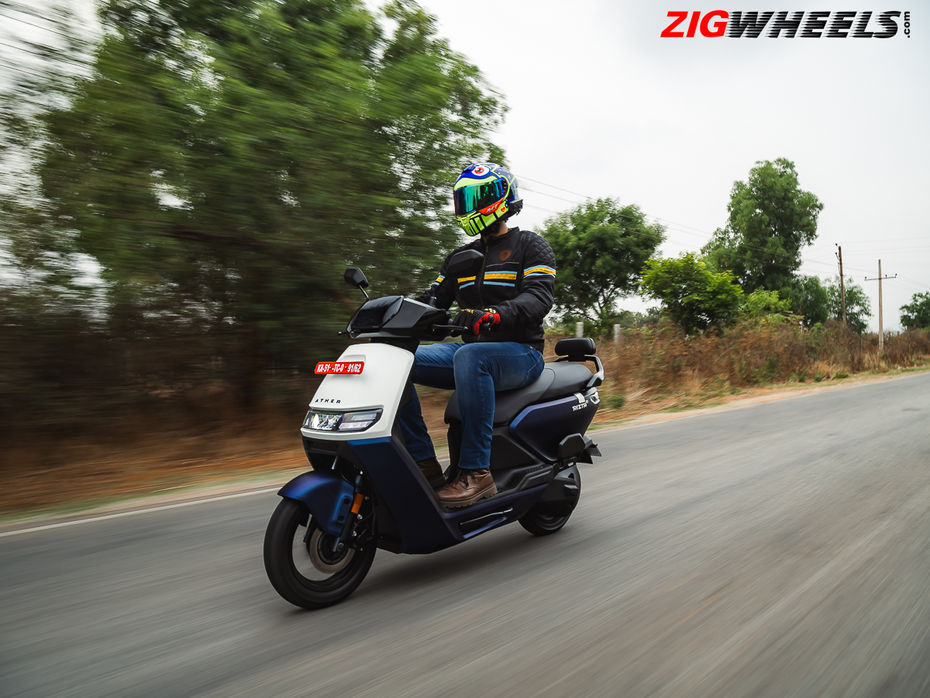
Photography: Kamesh Chauhan
We’ve always loved Ather’s electric scooters such as the 450X and the 450 Apex thanks to their sporty nature and exciting performance. But Ather’s goals with the Rizta have been to make a practical family scooter. Now, the concept of a family electric scooter might sound boring to some, but Ather has always been known to do things differently. So, does the Rizta strike a sweet balance between excitement and practicality? Or has it gone completely in the opposite direction of its venerable 450X to just focus on practicality with the Rizta?

Right away, we’re going to start with a gripe. While the 450X’s design is sharp and sporty, the Rizta is much more boxy and slab-sided. In many ways, where the 450’s design looks organic, the Rizta’s looks industrial - think more microwave than McLaren.
It’s not like the design doesn’t have any redeeming qualities, though. The slim rectangular LED headlight on the front apron that flows into the integrated indicators looks good, but will remind you a lot of the TVS iQube. And the strip-like LED tail light wrapping around the rear looks particularly good. But otherwise, the design feels a little too conservative. It certainly might appeal to those of a slightly conservative bend of mind, but generally those who like the 450’s design language won’t be big fans of the Rizta’s design.
The one big saving grace the Rizta has is the choice of colours - some lovely pastel colours and some striking dual-tone paint schemes as well. You can check out all the colours here.
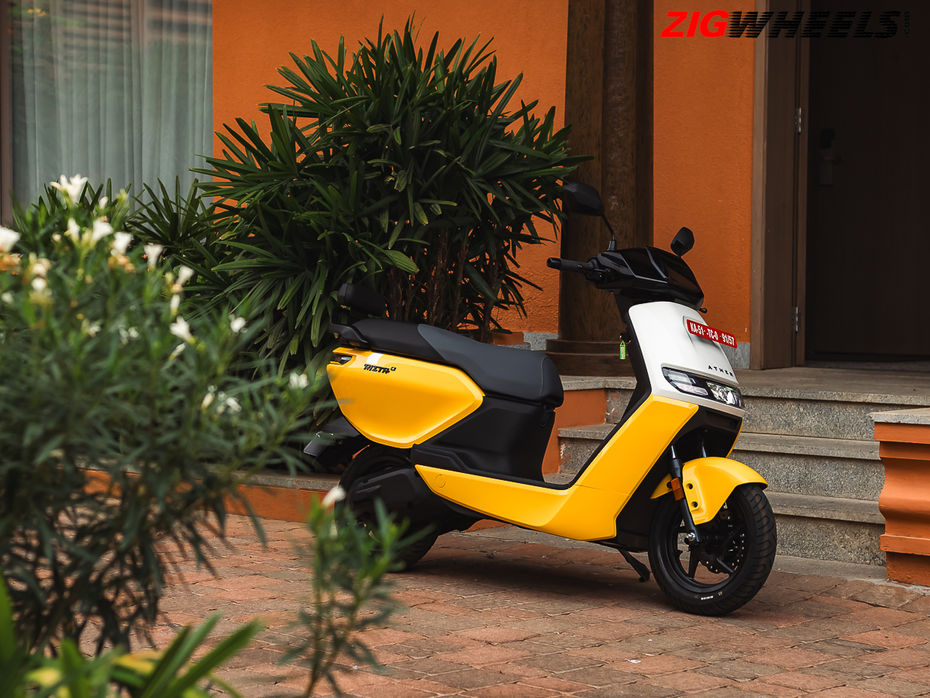
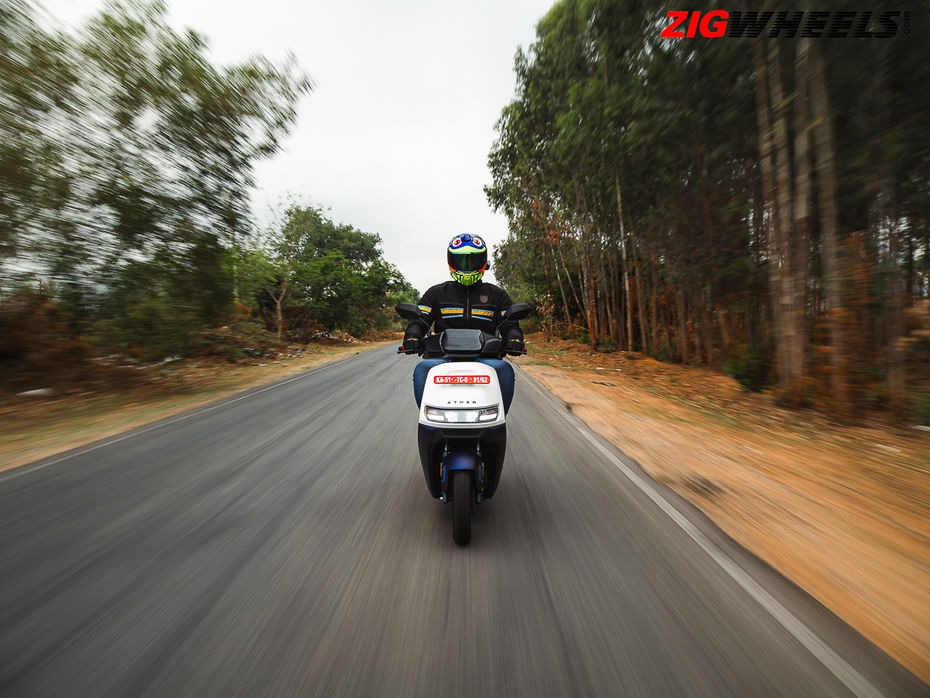
the automobile community
Powering the Rizta is a mid-mounted electric motor that makes 4.3kW of peak power and 22Nm of maximum torque (compared to 6.4kW and 26Nm on the 450X). So obviously, the Rizta isn’t as quick as the 450. But outright performance was never the Rizta’s objective, and that’s why it only gets 2 riding modes: Smart Eco and Zip. No Warp mode here at all.
Ather claims the Rizta can accelerate from 0 to 40kmph in 4.7 seconds. That feels about comparable to some of the more family-oriented 125cc petrol scooters. While that’s not too slow by any means, it doesn’t feel ‘electric.’ The performance is adequate for city use, and overtaking traffic is easy enough if you’re riding in Zip mode. Smart Eco mode felt a bit disappointing as it limits top speed to about 50kmph, and on our test ride, it struggled to climb inclines.
The Rizta Z that we tested is offered in two battery options - 2.9kWh and 3.7kWh - with claimed IDC ranges of 123km and 159km respectively. On the other hand, the base Rizta S only comes with the 2.9kWh battery pack. We rode the 2.9kWh version, and after riding for a little over 35km in Zip mode, we saw the charge drop by about 40 percent. By that calculation, it should manage about 70-80km in Zip mode, and you might be able to get 90-100km of range with a mix of riding in Zip and Smart Eco.
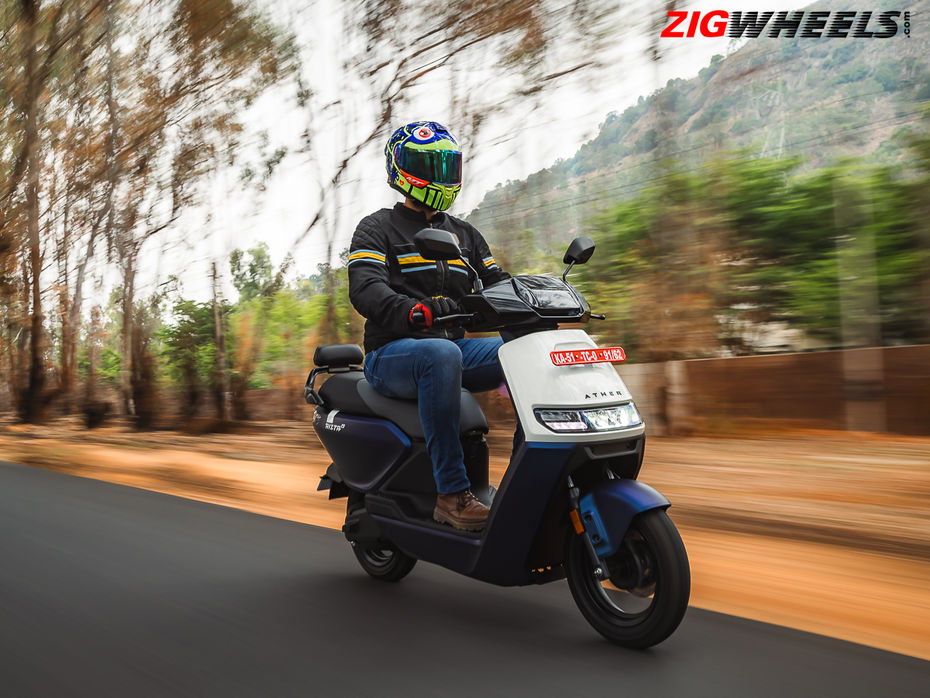
The Rizta’s suspension hardware is similar to the 450’s - a telescopic fork and a monoshock. Thankfully, though, where the 450 is set up to be sporty and stiff to the point of being a back breaker, the Rizta is set up much softer. It handles bumps and potholes well enough. But the ride isn’t plush by any means. It’s comfortable enough on most surfaces, but the sharp bumps can be felt through the handlebar and the seat.
One look at the Rizta’s boxy appearance and you’d think that it’s not designed for any cornering fun. And you’d be right. It’s not going to give you the same cornering thrills the 450X does. But despite being on the heavier side - 119kg - it changes direction fairly easily. And its special low-rolling resistance MRF tyres feel stable for the most part, even though they’re primarily designed to reduce road friction and thus increase range.
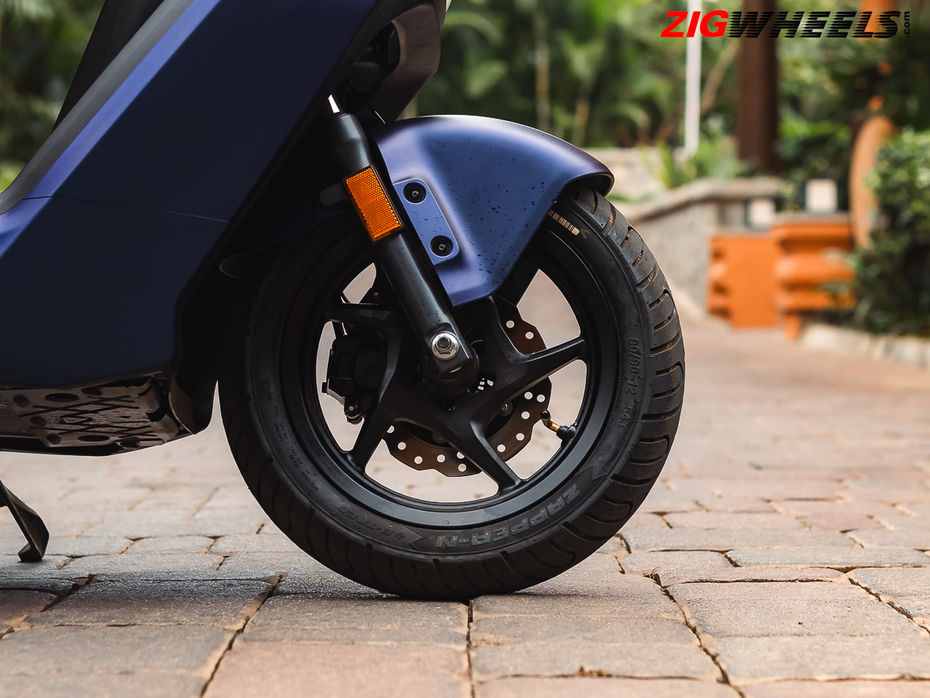
The only time the tyres can feel skittish is when you go hard on the brakes. There were a couple of times on my ride that, if I didn’t pay attention to the surface I was braking hard on, the front tyre would skid ever so slightly. That’s also because the 200mm front disc has a pretty good bite. I wish I could tell you how well the 130mm rear drum brake worked, because I barely used the rear brake while riding. A couple of times that I gently squeezed the rear brake lever, the scooter behaved as expected. The Rizta also gets a combined braking system for enhanced safety.
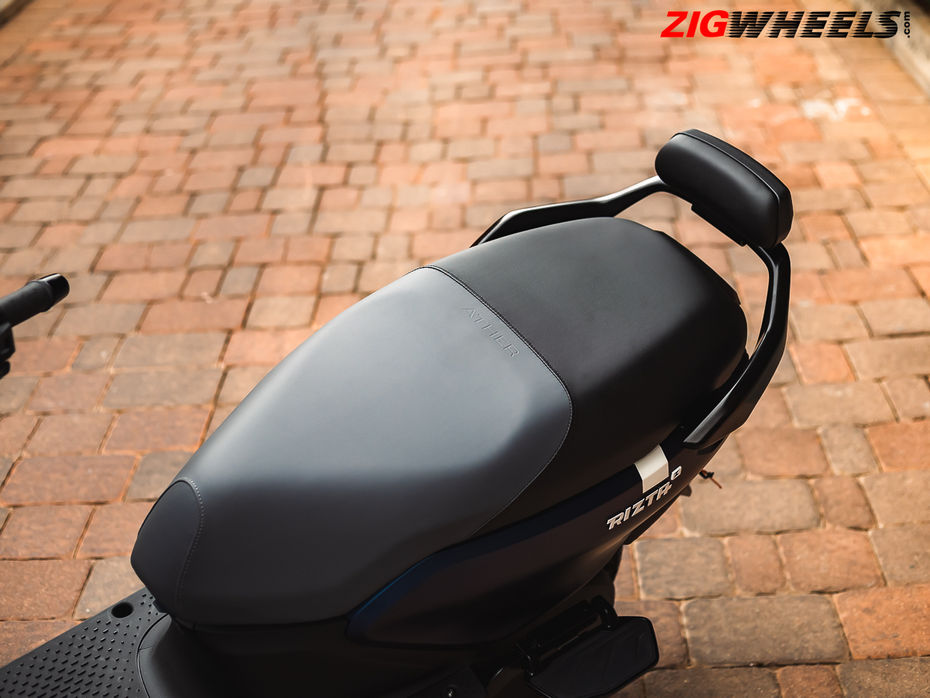
One big talking point about this Rizta is its massive seat, which, Ather claims, is the largest in class. And we believe them, as there was enough space to carry a large pillion even though I was wearing a backpack while riding. There’s plenty of space on the seat for pillions to sit side-saddle as well. On top of that, the backrest that comes on the Rizta Z provides plenty of support to pillions. The pillion footrests, which are integrated into the scooter’s floorboard, are spacious enough and quite comfortable.
At 780mm, the Rizta’s seat height isn’t too tall, but since the seat is quite wide, I suspect that riders with larger thighs or those under 5’5” might need to sit all the way forward on the seat for their legs reach the ground easily. But I think if you’re 5’6” or taller, you should be comfortable on any part of the seat. And speaking of comfort, the Rizta’s seat is quite comfortably padded. After riding for a couple of hours or so, I can’t complain about any pains.
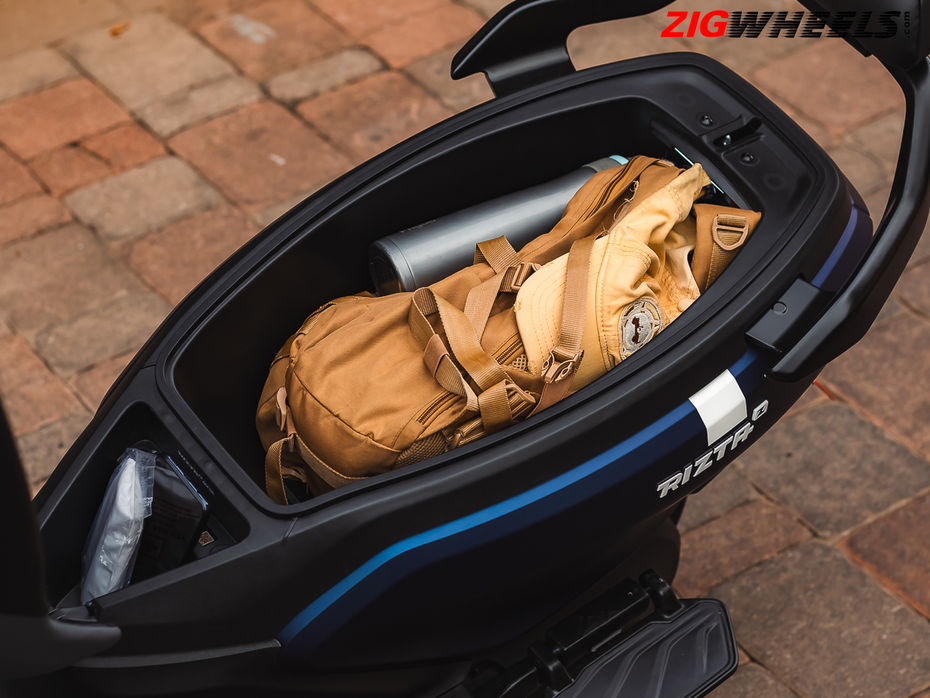
Apart from seating comfort, the Rizta has plenty of space available for keeping objects. The floorboard is big enough to rest a large laptop bag, without interfering much with the rider’s feet, and the underseat storage is a massive 34 litres. It’s a truly cavernous storage space that’s big enough to easily swallow a 15-inch laptop bag, or even a full-face helmet - both things we tested, which should make it enough for a week’s worth of groceries.
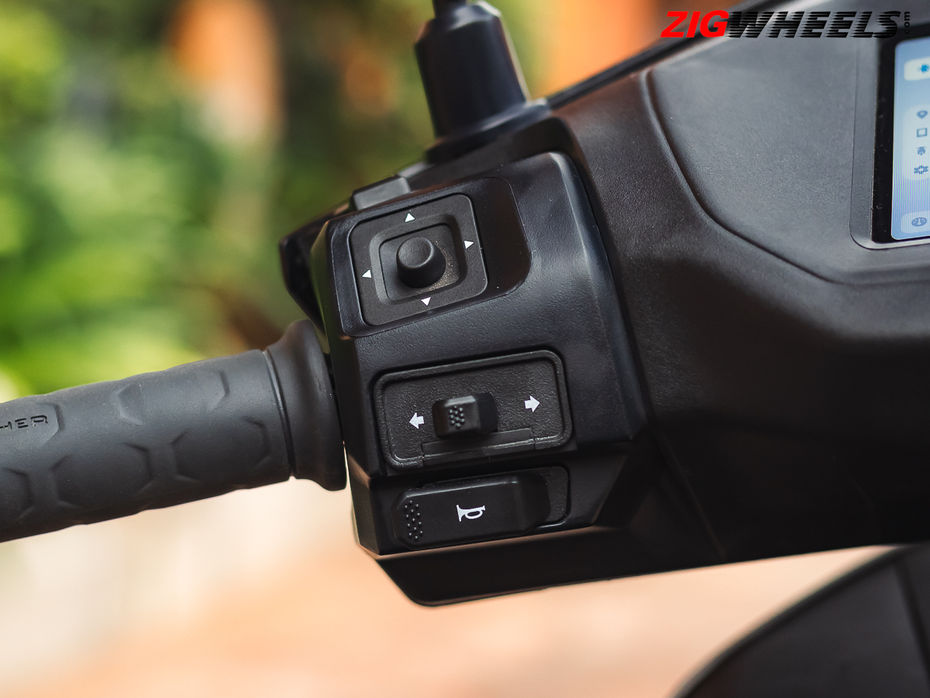
The Rizta features a crisp 7-inch colour TFT console. But unlike the 450X, this one isn’t a touchscreen, and is instead controlled using a 5-way joystick on the left handlebar. This console not only gets your standard connected features like call and message alerts, and music control, it can even show your last five WhatsApp messages, and features Alexa integration. Currently, the Alexa integration is very rudimentary. Once your phone with your Amazon Alexa account is paired with the scooter, you can ask Alexa about the charge levels and status of your scooter from anywhere you are. There’s even Google Maps navigation on offer, but since there’s no touchscreen, you need to input your destination using the Ather app, and that pushes the navigation data to the screen. If you want to change your destination at any time, you need to do it from your phone.
The Magic Twist feature that we first experienced on the Ather 450 Apex has made its way to the Rizta as well. Just like on the Apex, the Rizta’s throttle travels 15 degrees in the opposite direction as well. This can be used to smoothly control the amount of regenerative braking (where the scooter slows down as if it was engine braking on a petrol scooter). Once you get used to this system, it’s actually possible to ride the scooter using just the reverse throttle to brake, and even come to a complete stop when you want it to. This system can work in conjunction with the switchable coasting regen (which does a small amount of regenerative braking when you just release the throttle).
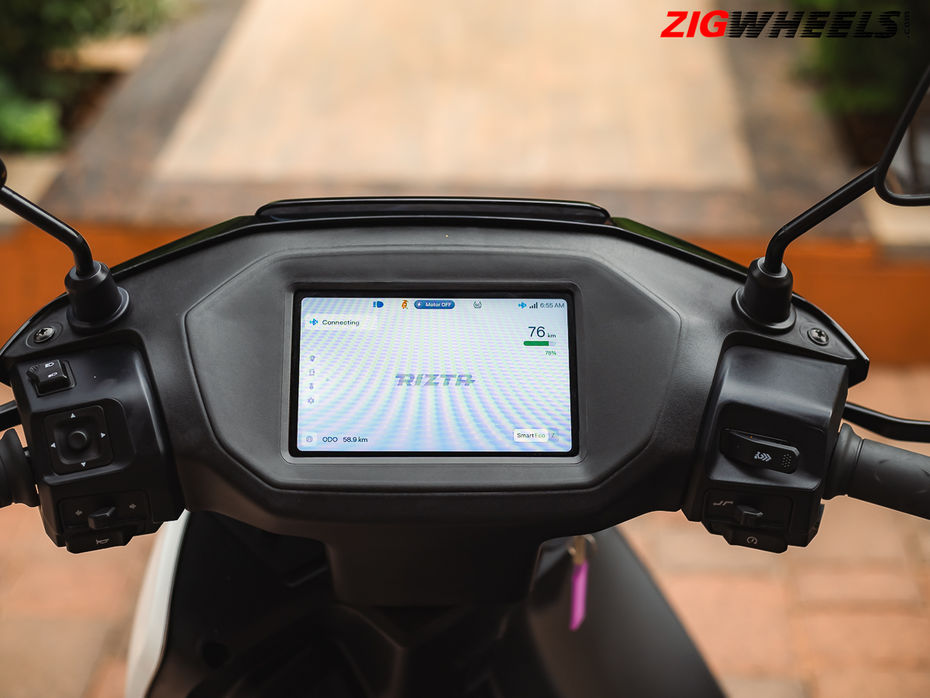
One brand new feature for the Rizta is Skid Control, which is basically Ather’s version of traction control. It cuts the power to the rear wheel if it starts slipping. But because the Rizta is electric, this intervention can be controlled very smoothly. Most of the time, you won’t even know when the system is working, but it does work.
Some other features that have come from the Ather 450 series to the Rizta are Auto Hold, which automatically holds the scooter on an incline or decline without having to hold the brakes; Emergency Stop Signal, which flashes both sets of indicators when braking really hard; and Fall Safe, which automatically cuts the motor in case of a fall.
But all these features are only available if you go for the optional Pro Pack, which costs Rs 15,000 extra for this mid-spec Rizta Z with the 2.9kWh battery pack, but also adds an additional 2 years/30,000km warranty over the standard 3 years/30,000km warranty.
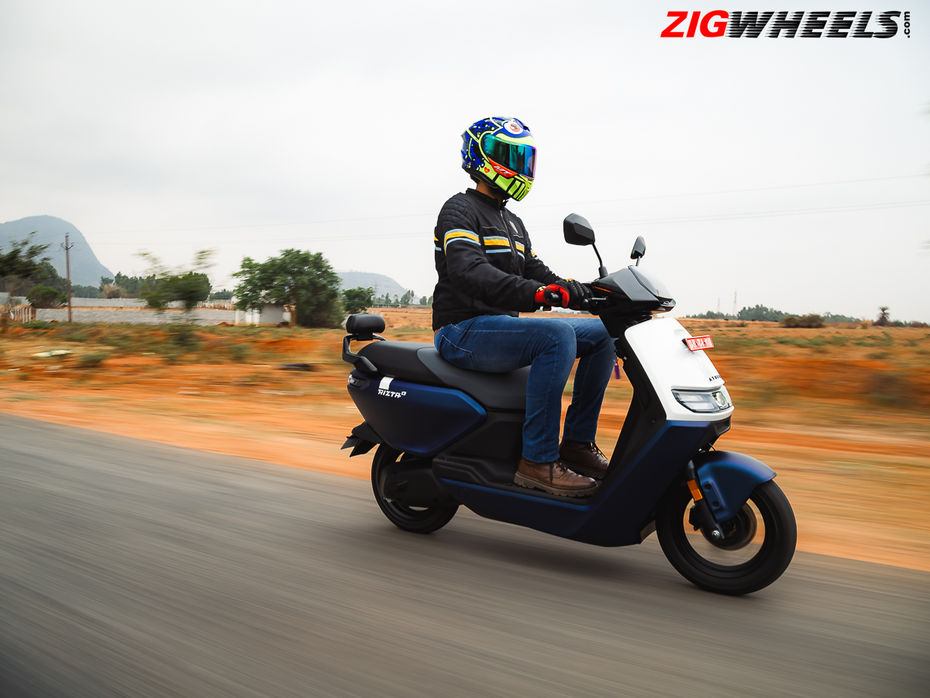

Ather’s direction with the Rizta was clear - make a properly family-oriented electric scooter - and that’s something they’ve nailed very well thanks to all the practicality and features on offer. But another thing is also clear. On the Rizta, you’re not going to get the same riding fun that you get on the Ather 450X. For someone looking to buy an electric scooter that would work for a variety of family members and family needs, the Rizta is a pretty solid option.
As for price, this Rizta Z (2.9kWh) comes in at Rs 1.25 lakh (ex-showroom Bengaluru), and when you add the Pro Pack, you’re looking at an ex-showroom price of Rs 1.40 lakh. Now while that might sound like a lot, it actually is a sweet spot in this segment, as the other great family electric scooter, the TVS iQube S, is priced the same. Prima facie, while the Rizta offers more features than the iQube S, the iQube S should offer a little more range than the Rizta. But how these two actually compare in the real world is something we’ll have to see once we ride them both together.
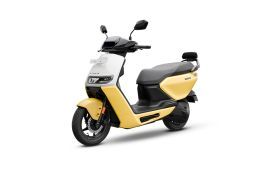

TVS iQube S 4000km Long Term Report: Knowing Each Other Better

TVS iQube S 2000km Long-term Report: Likeable Little Scooter

TVS iQube Road Test Review: The Right Family Electric Scooter?

River Indie EV Road Test Review: Quirky, But Practical

River Indie Electric Scooter: First Ride Review

Ola S1 Pro vs Ather 450X Comparison Review: Is Ola Really The Game...

Ola S1 Pro MoveOS 3 Review: Better But Still Not Faultfree

Simple One First Ride Review: The Chosen One?
 Honda Activa e
Honda Activa e
 TVS iQube
TVS iQube
 Bajaj Chetak
Bajaj Chetak
 Ola S1 X
Ola S1 X
India's largest automotive community
 Ather 450X
Rs. 1.46 Lakh
Ather 450X
Rs. 1.46 Lakh
 Ather 450S
Rs. 1.29 Lakh
Ather 450S
Rs. 1.29 Lakh
 Ather 450 Apex
Rs. 1.99 Lakh
Ather 450 Apex
Rs. 1.99 Lakh
 Mahindra BE 6
Rs. 18.90 Lakh
Mahindra BE 6
Rs. 18.90 Lakh
 Hyundai Creta Electric
Rs. 17.99 Lakh
Hyundai Creta Electric
Rs. 17.99 Lakh
 Mahindra XEV 9e
Rs. 21.90 Lakh
Mahindra XEV 9e
Rs. 21.90 Lakh
 MG Windsor EV
Rs. 13.99 Lakh
MG Windsor EV
Rs. 13.99 Lakh
 Tata Curvv EV
Rs. 17.49 Lakh
Tata Curvv EV
Rs. 17.49 Lakh